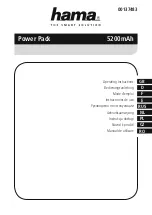
Chapter 3. Virtualization
143
Figure 3-14 shows the behavior of a system with Active Memory Deduplication enabled on its
Active Memory Sharing shared memory pool. Duplicated pages from separate LPARs are
stored only once, providing the Active Memory Sharing pool with more free memory.
Figure 3-14 Identical memory pages mapped to a single physical memory page with Active Memory
Duplication enabled
Active Memory Deduplication depends on the Active Memory Sharing feature to be available,
and consumes CPU cycles donated by the Active Memory Sharing pool’s Virtual I/O Server
(VIOS) partitions to identify deduplicated pages. The operating systems that are running on
the Active Memory Sharing partitions can “hint” to the PowerVM Hypervisor that some pages
(such as frequently referenced read-only code pages) are particularly good for deduplication.
To perform deduplication, the hypervisor cannot compare every memory page in the Active
Memory Sharing pool with every other page. Instead, it computes a small signature for each
page that it visits and stores the signatures in an internal table. Each time that a page is
inspected, a look-up of its signature is done in the known signatures in the table. If a match is
found, the memory pages are compared to be sure that the pages are really duplicates. When
a duplicate is found, the hypervisor remaps the partition memory to the existing memory page
and returns the duplicate page to the Active Memory Sharing pool.
D
U
U
U
U
U
U
U
U
U
U
U
U
U
U
U
U
U
U
U
U
U
D
U
U
U
U
U
U
U
D
D
U
U
U
U
U
U
U
D
U
U
U
With
Active Memory
Deduplication
Mappings
AMS shared memory pool
LPAR1
Logical Memory
LPAR2
Logical Memory
LPAR3
Logical Memory
D
U
Duplicate pages
Unique pages
KEY:
Free
Содержание Power 720 Express
Страница 2: ......
Страница 14: ...xii IBM Power 720 and 740 Technical Overview and Introduction ...
Страница 128: ...114 IBM Power 720 and 740 Technical Overview and Introduction ...
Страница 204: ...190 IBM Power 720 and 740 Technical Overview and Introduction ...
Страница 205: ......
















































